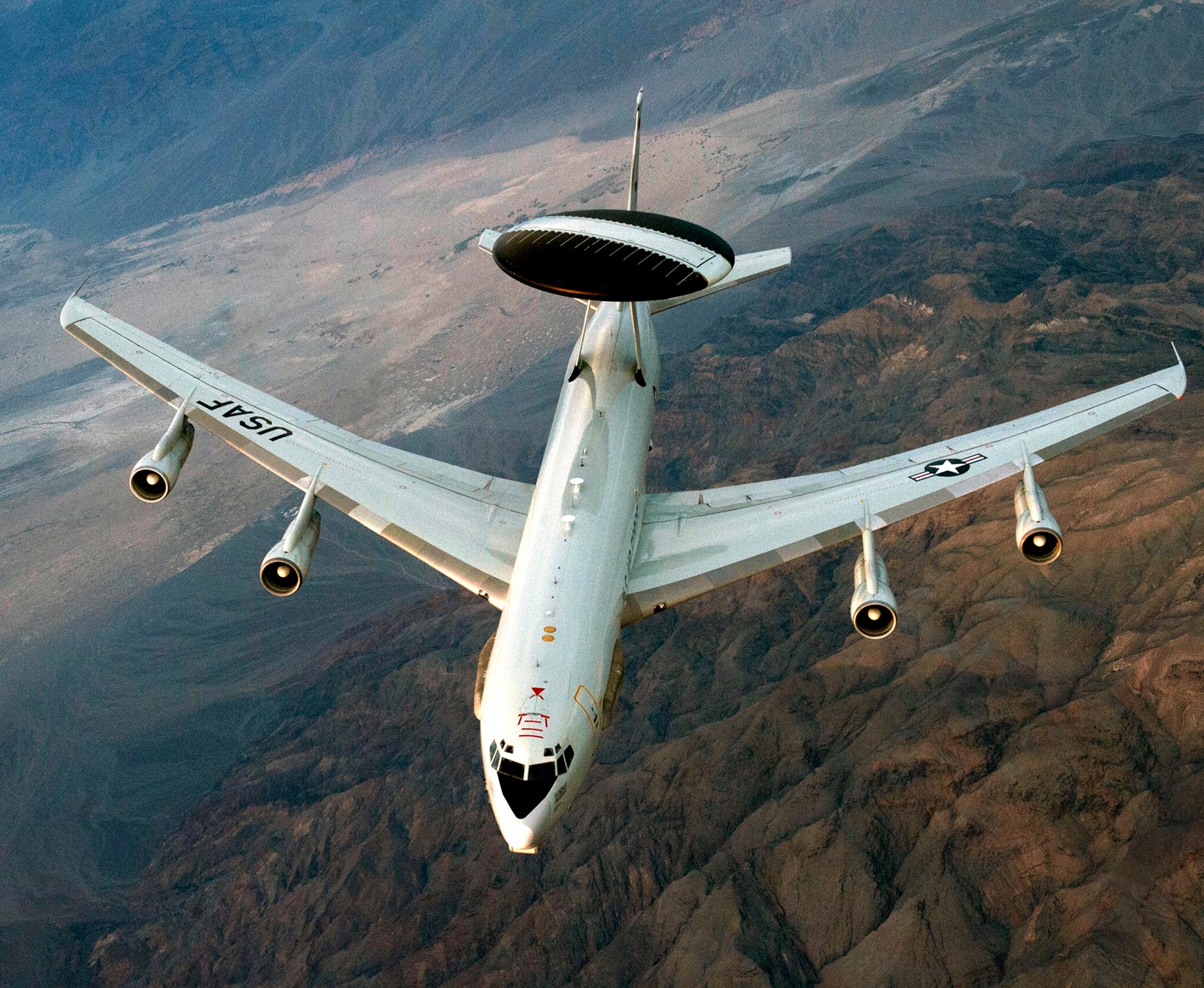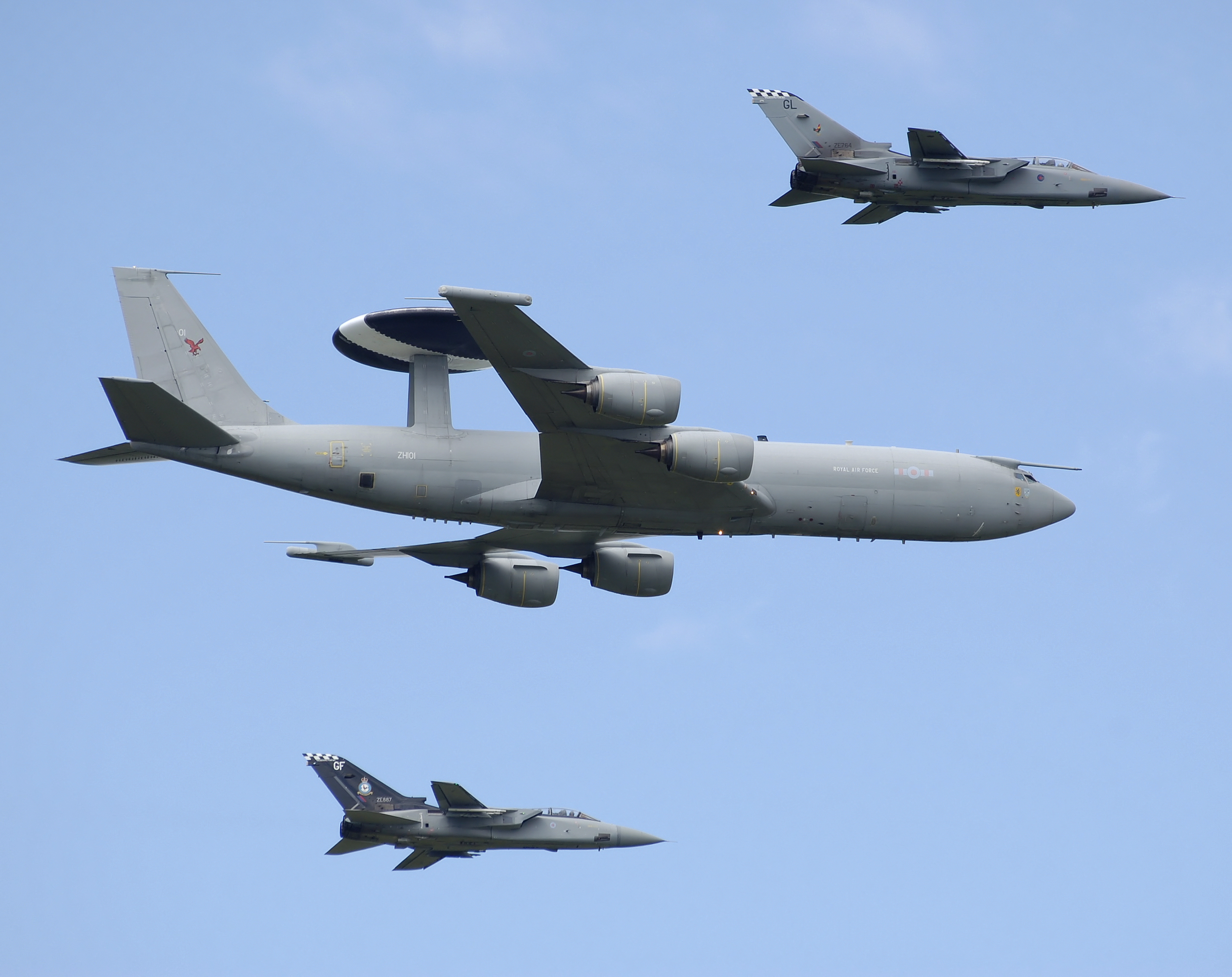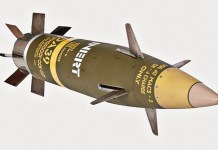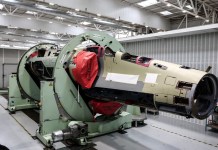The US Air Force’s E-3 Sentry AWACS planes have been in service for more than 30 years. The last aircraft was delivered in 1991. A single AWACS can monitor up to 120,000 square miles of territory.
South Korean F-35 Stealth Aircraft Make First Public Appearance At Defense Expo Amid Regional Tensions
Armed With Unmanned Turret, T-14 Armata Tank One Step Closer To Induction By Russian Military
Developed by Boeing Defense and Space Group, the E-3 Sentry airborne warning and control system (AWACS) plays a crucial role in conducting airborne surveillance and command, control and communications (C3) operations for tactical and air defense forces.
The aircraft is known as E-3 Sentry AWACS in the US, E-3 Sentry AEW (airborne early warning) in the UK, and E-3 SDA (Systeme de Detection Aeroporté) in France.
The E-3 features a look-down radar with a 360 degrees view of the horizon with a range of more than 320 km at operating altitudes. This radar is capable of detecting and tracking air and sea targets at the same time.
Ahead Of FIFA World Cup, US’ Continued Silence Over MQ-9 Reaper Drone Sales Frustrates Host Qatar — Reports
In a tactical role, the E-3 can detect and track hostile aircraft which are operating at low altitudes over any terrain. They can also identify and control friendly aircraft which are operating in the same airspace.
As part of its strategic defense role, the E-3 provides the capability of detecting, tracking, and intercepting airborne threats.

The first E-3 aircraft entered service with the US Air Force in March 1977 and their deliveries were concluded in June 1984. Currently, a total number of 33 E-3 Sentry aircraft are in service with the US Air Force, 7 with the UK Royal Air Force, 4 with the French Air Force and 5 aircraft with Royal Saudi Air Force.
Deliveries of the E-3 to the UK commenced in March 1991 and concluded in May 1992. The Royal Saudi Air Force received its E-3s from June 1986 till September 1987 and the French Air Force received its first E-3 aircraft in May 1991 and the last in February 1992.
Armed With Unmanned Turret, T-14 Armata Tank One Step Closer To Induction By Russian Military
The NATO airborne early warning force, which was established in 1980, has a fleet of 14 E-3A aircraft.
During Operation Desert Storm (Gulf War) from 1990 to 1991, 845 sorties of AWACS were flown. During the Kosovo crisis, the NATO E-3s played an important role in the enforcement of the no-fly zone over Bosnia by the United Nations.
The US Air Force used the E-3 Sentry aircraft for conducting Operation Enduring Freedom in Afghanistan in 2001 and also during Operation Iraqi Freedom in the year 2003.
World’s ‘Most Dangerous’ Stealth Fighter Jet – Why F-35 Lightning II Easily Beats F-22 Raptor, J-20 & Su-57 In Lethality?
Engine Shortage
The E-3s are powered by Pratt & Whitney TF-33 engines. The fleet of USAF’s E-3s is currently plagued by a shortage of engines and spare parts, thereby limiting their deployment significantly, Air Combat Command Head Gen. Mark Kelly said on October 25.

“We have not manufactured these engines from Pratt & Whitney for many years”, Kelly told a virtual event held by Mitchell Institute for Aerospace Studies. “That engine and that supply chain consume a lot more of my time and energy.”
With JF-17 Out, India’s HAL Tejas ‘On Verge’ Of Winning Malaysian Military Aircraft Tender – Local Media
The engine shortage has meant that the service is still far behind in having the full effective E-3 surveillance AWACS force it needs, leaving a serious gap but there is no alternative in sight, Kelly said.
The “TF-33 engine for AWACS is the greatest pressure point right now on my AWACS and JSTARS [Northrop Grumman E-8C Joint Surveillance Target Attack Radar System] fleet”, he explained.
- Written by Kashish Tandon/EurAsian Times Desk
- Contact the author at: kashishtandon21@gmail.com
- Follow EurAsian Times on Google News




